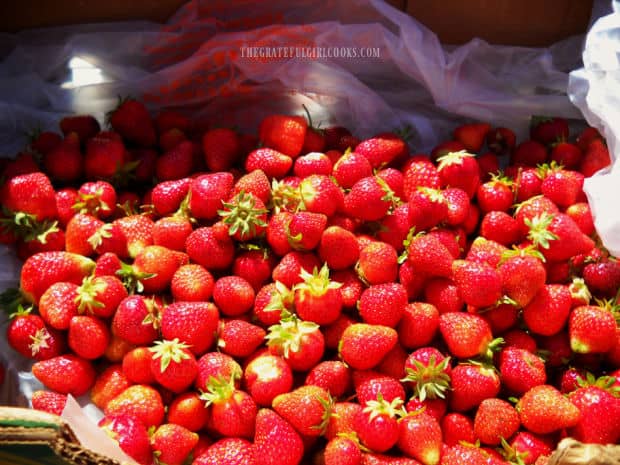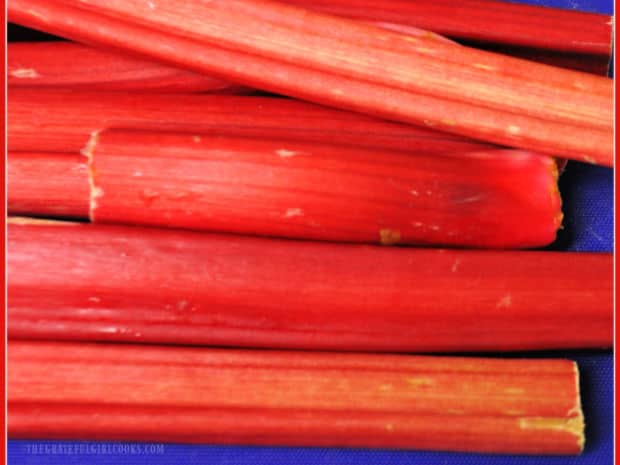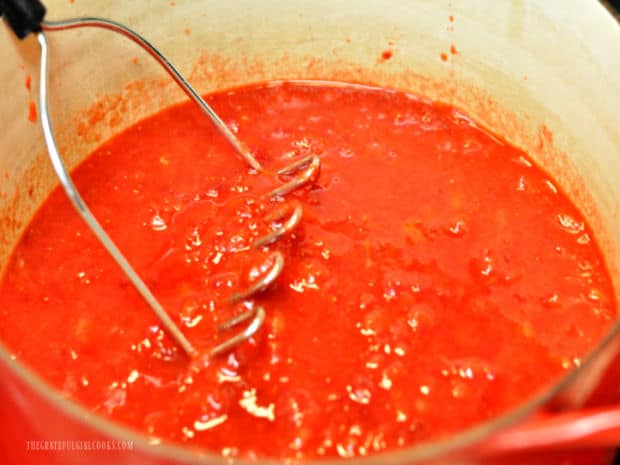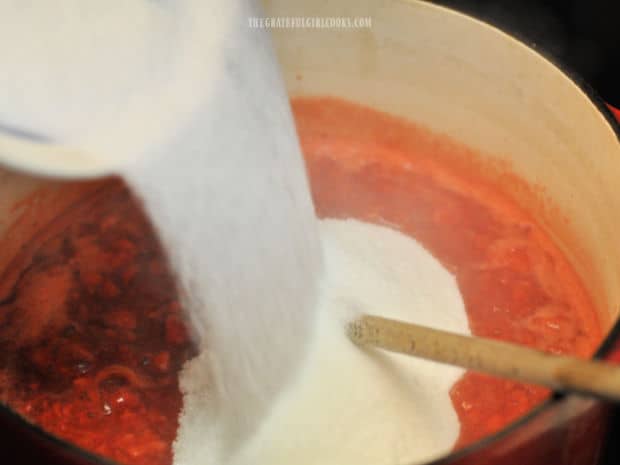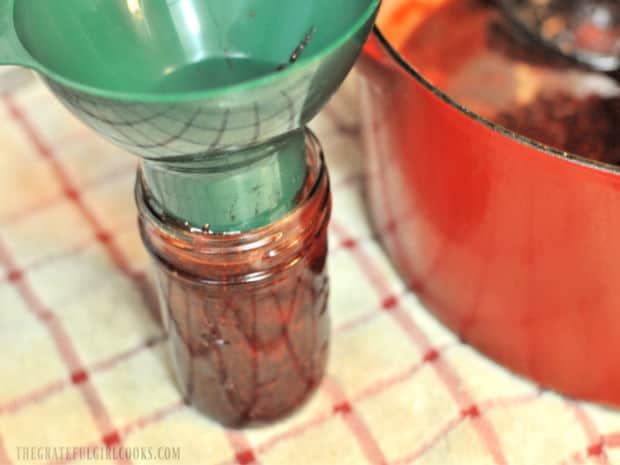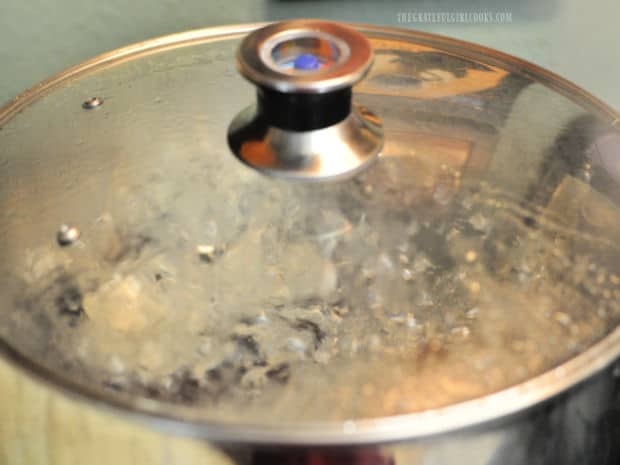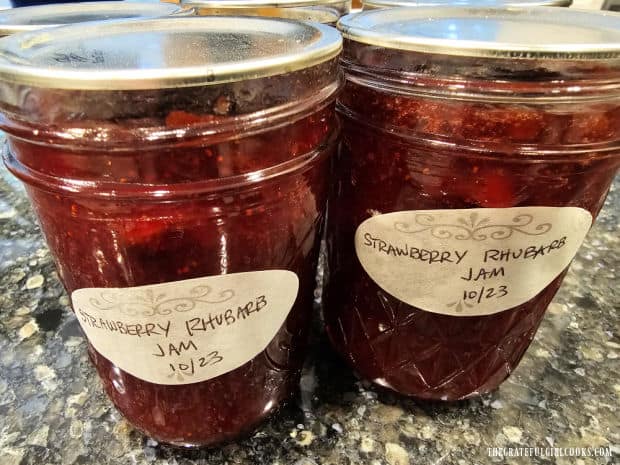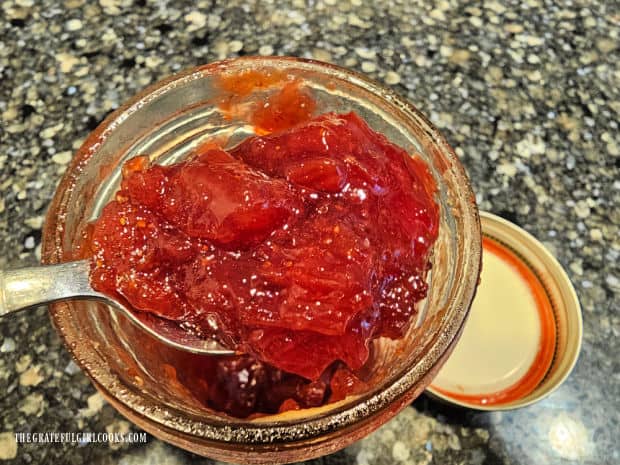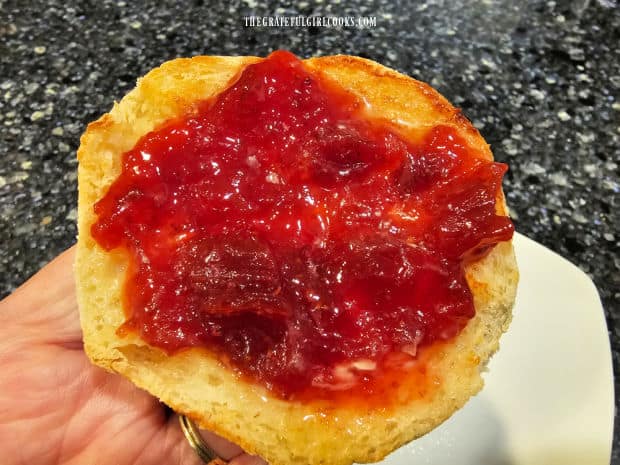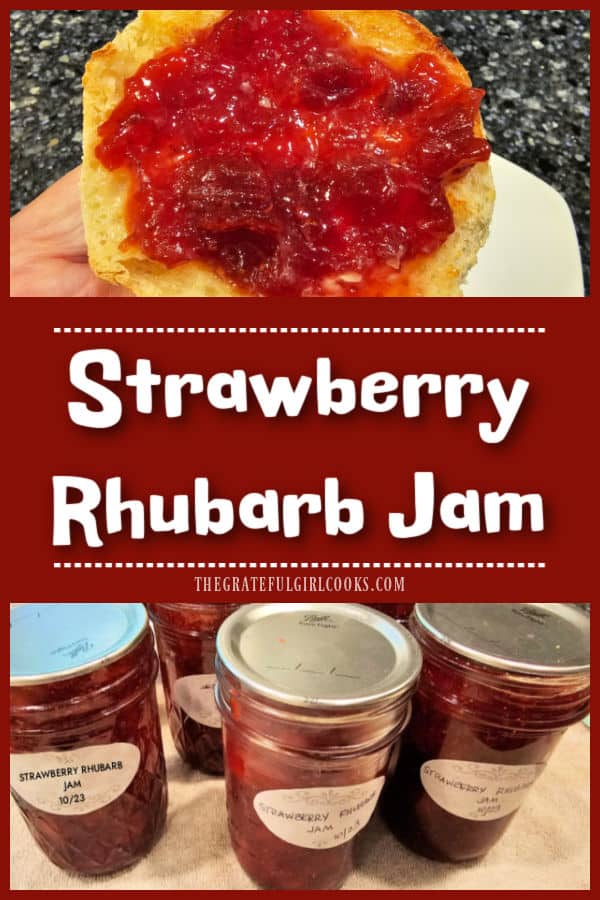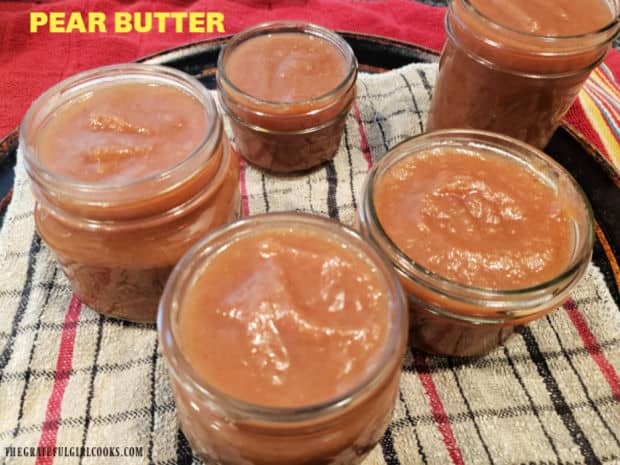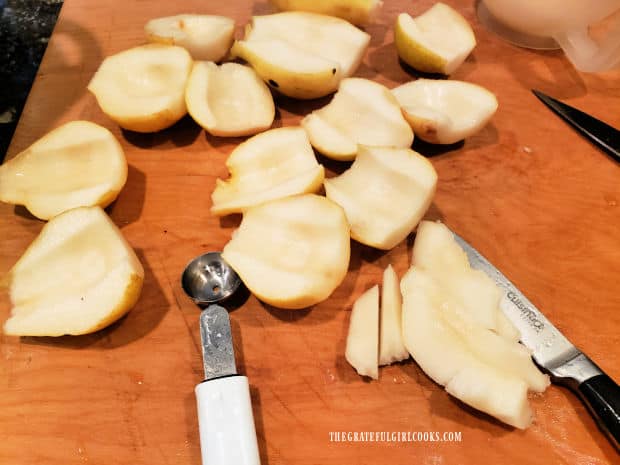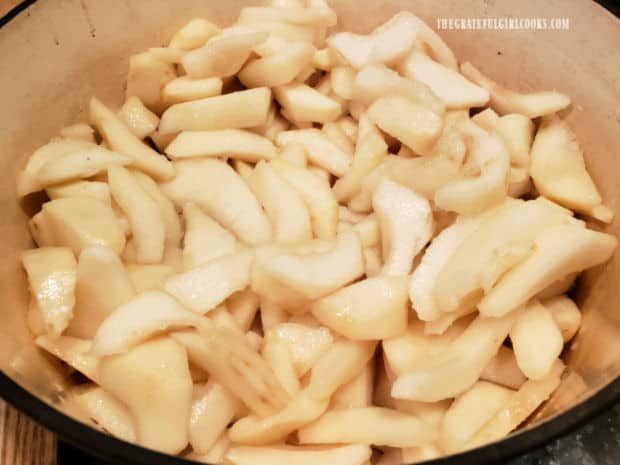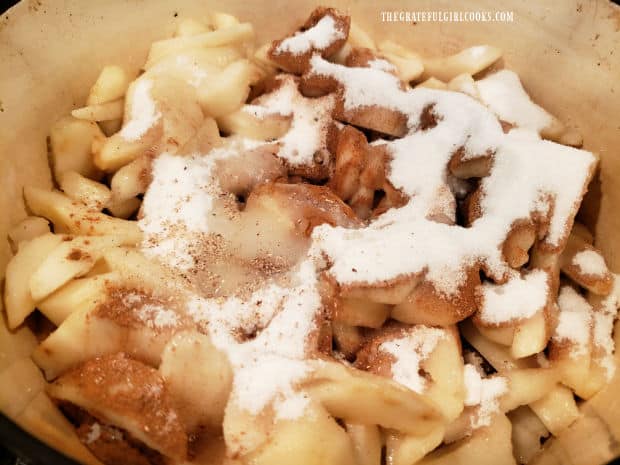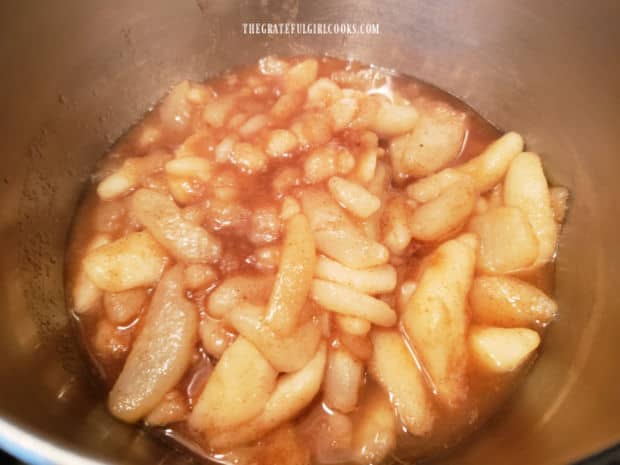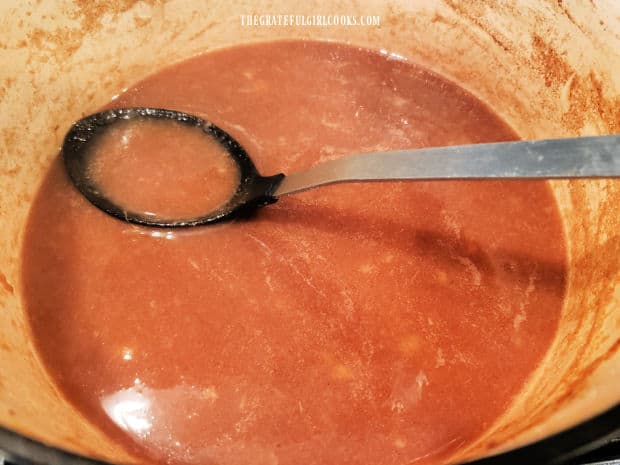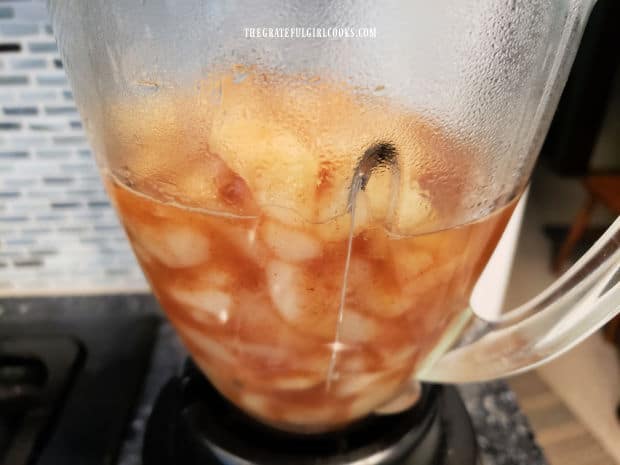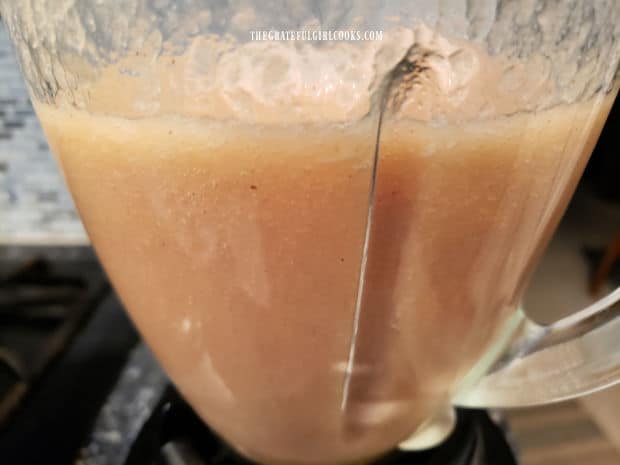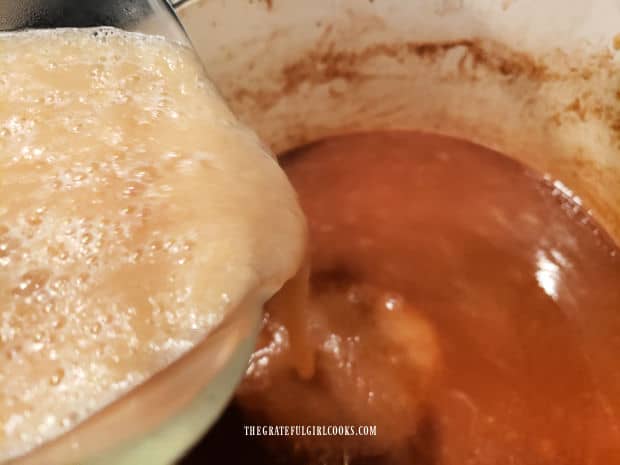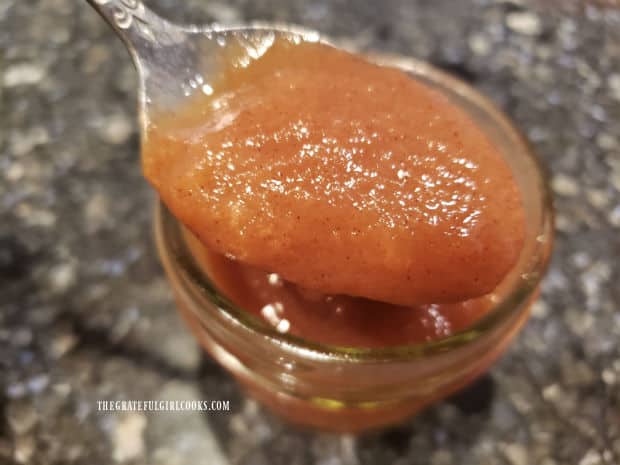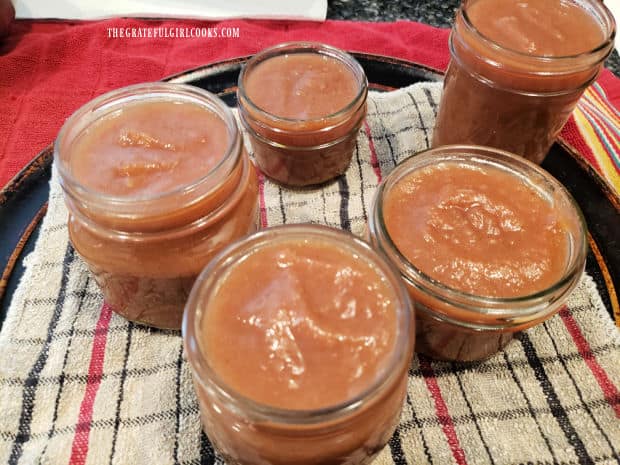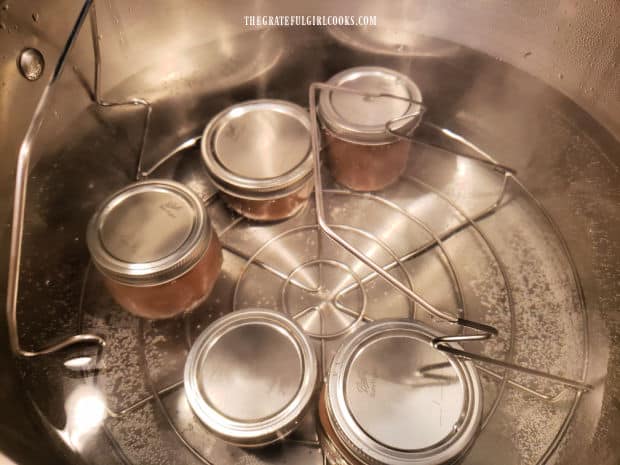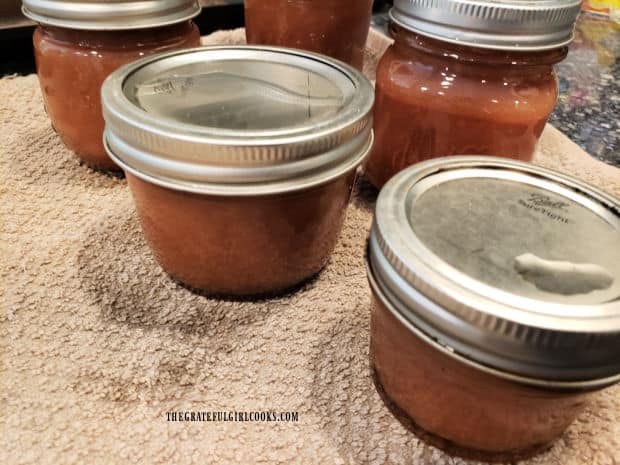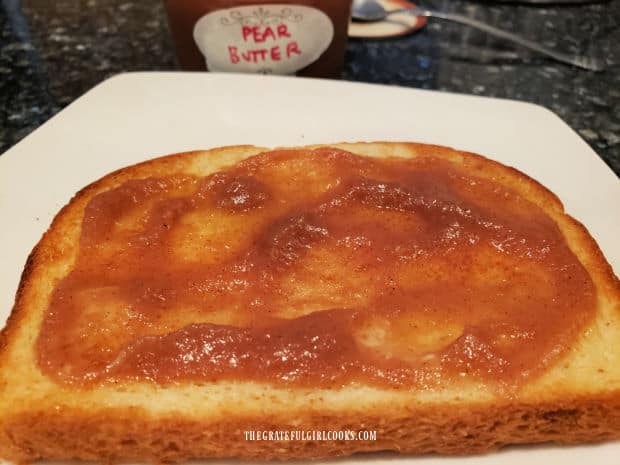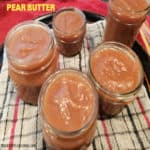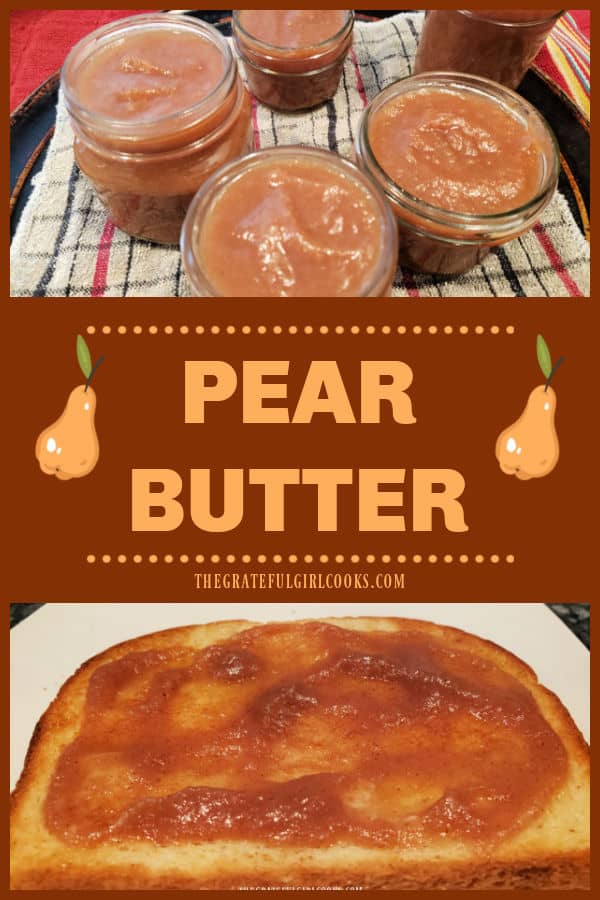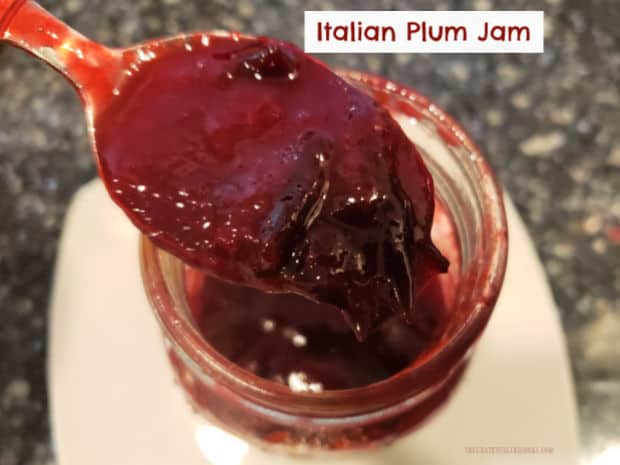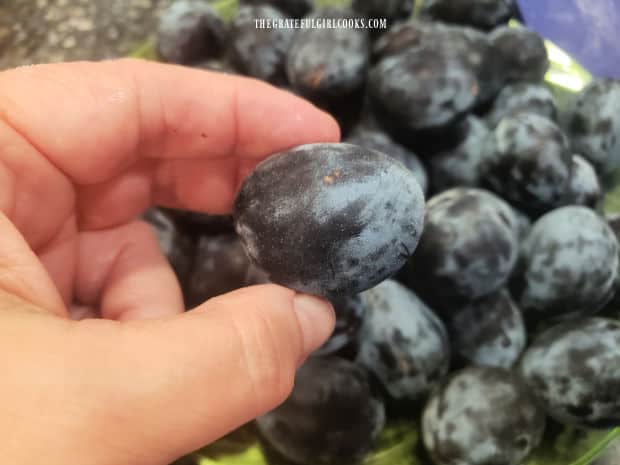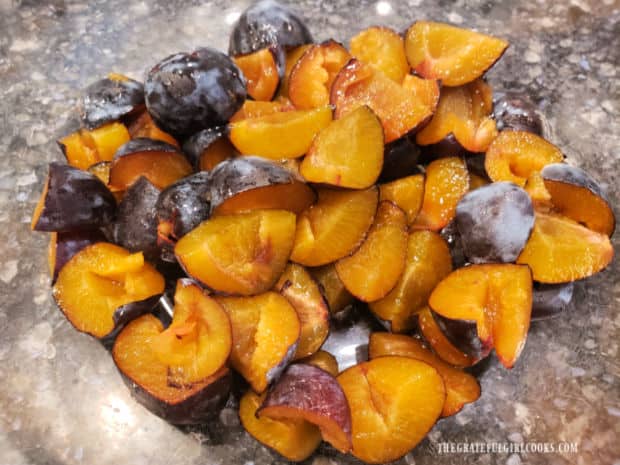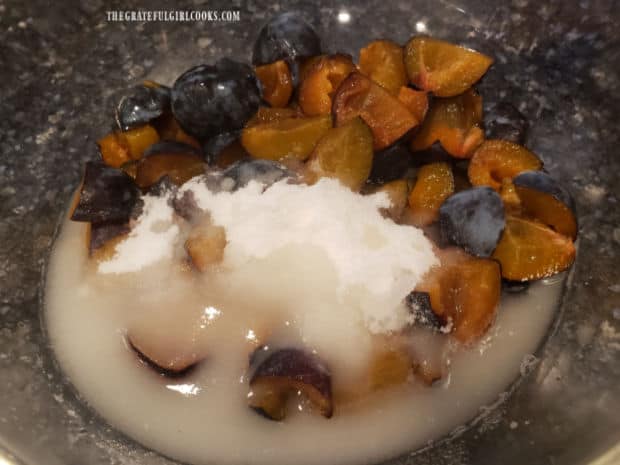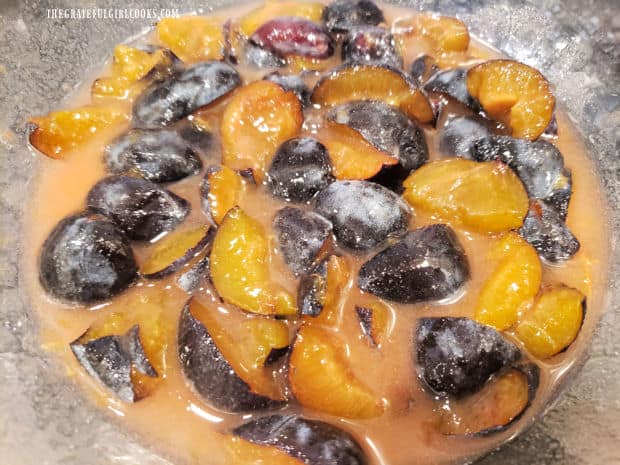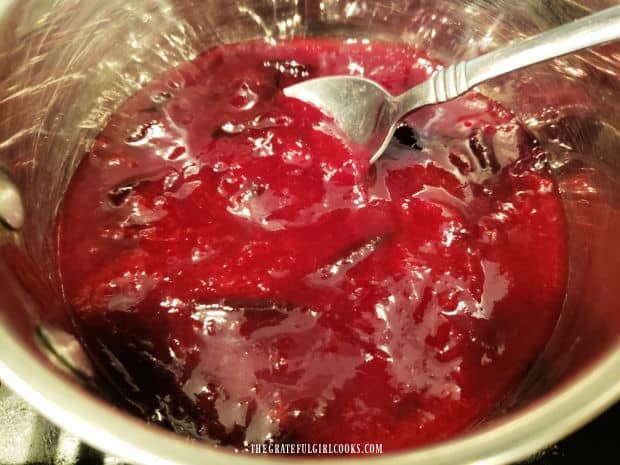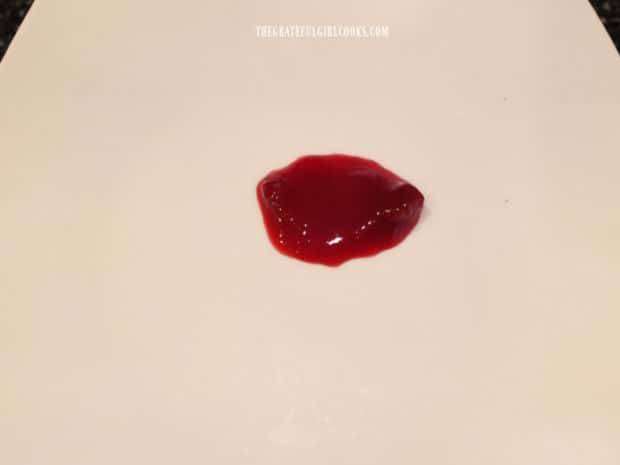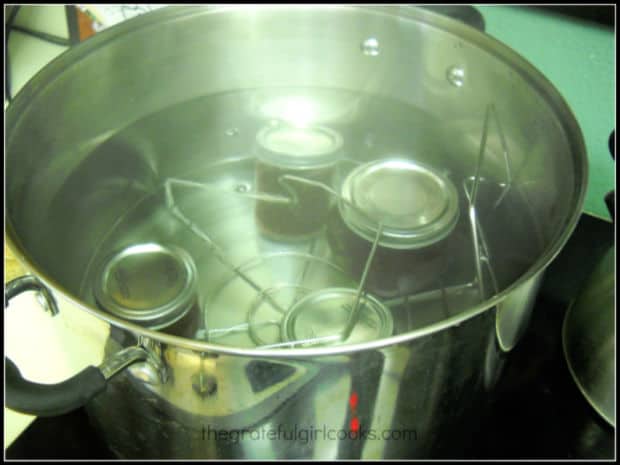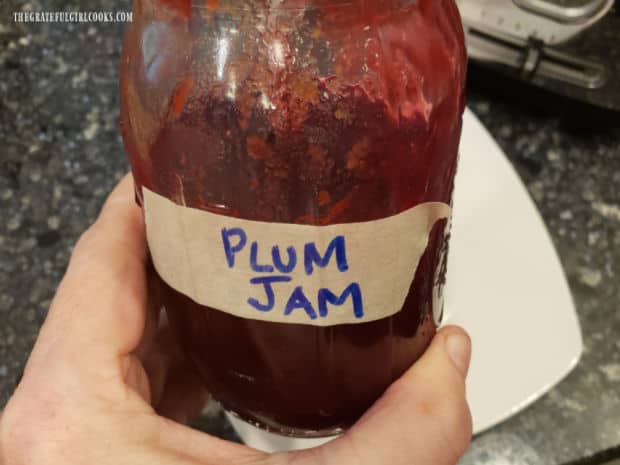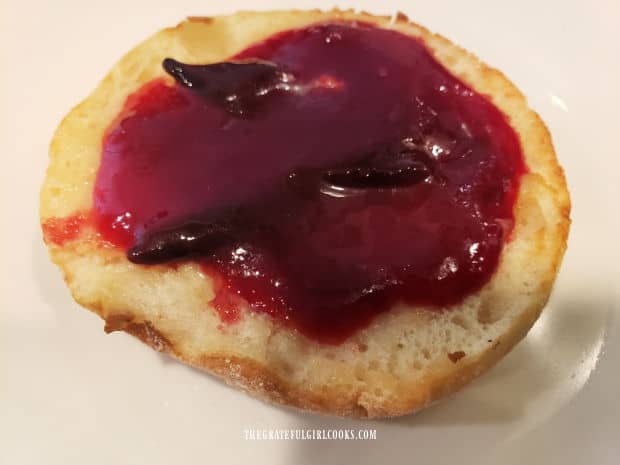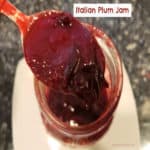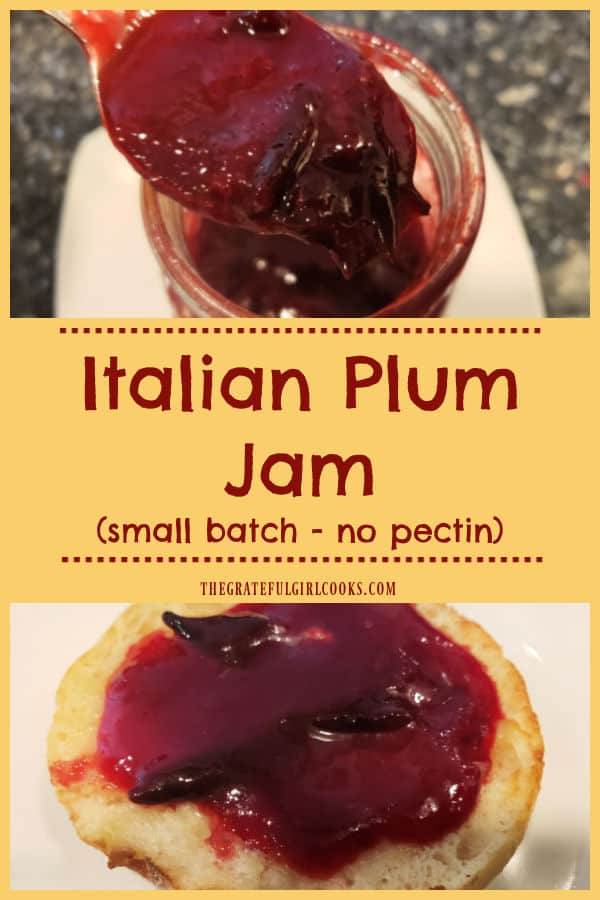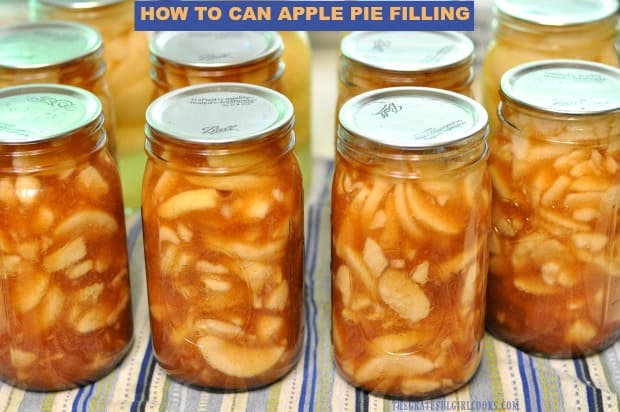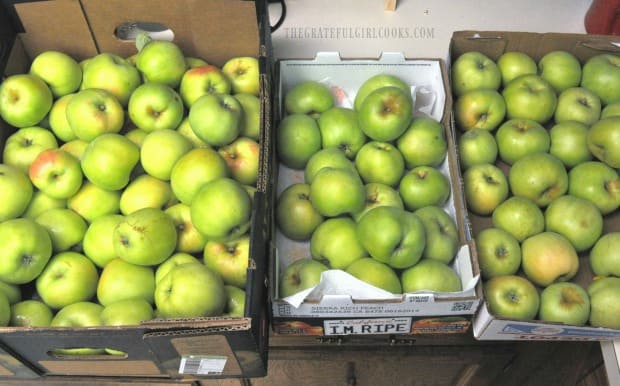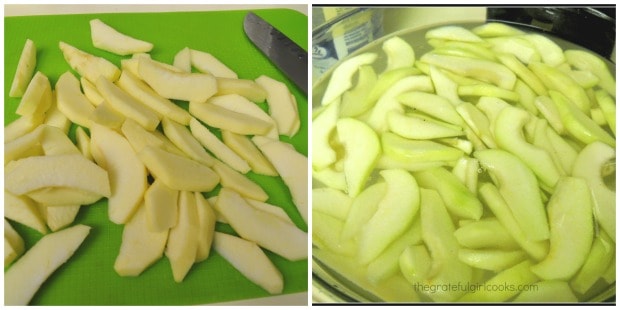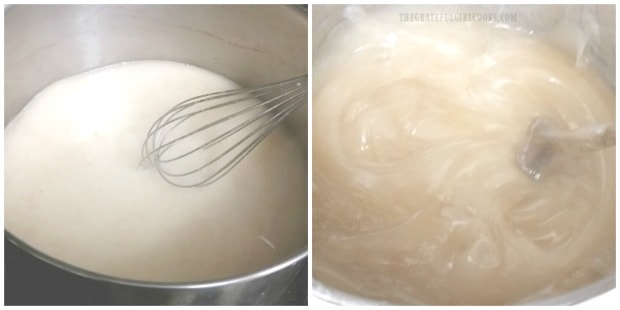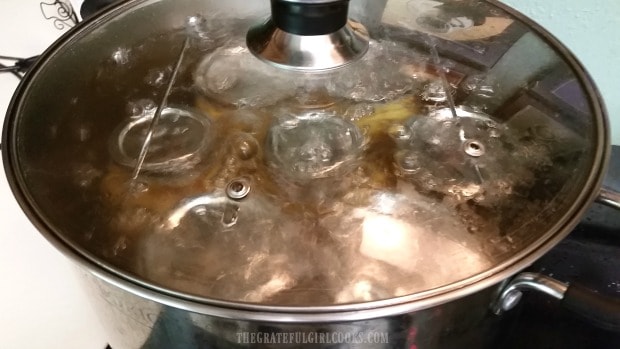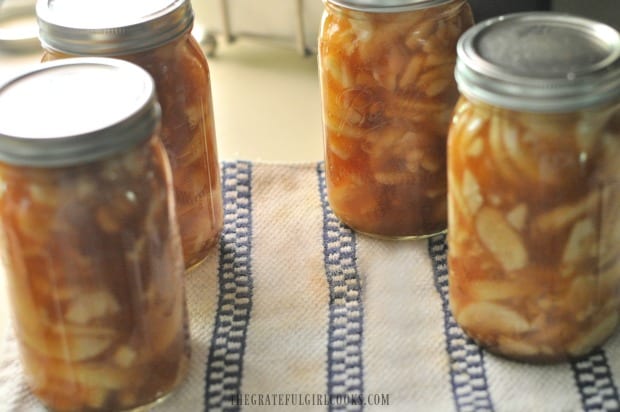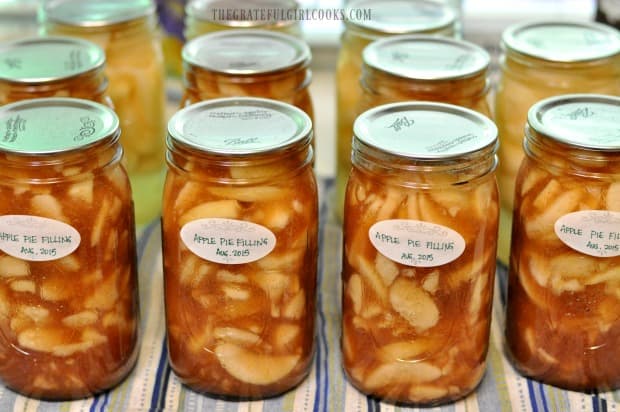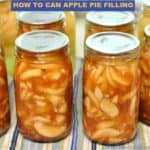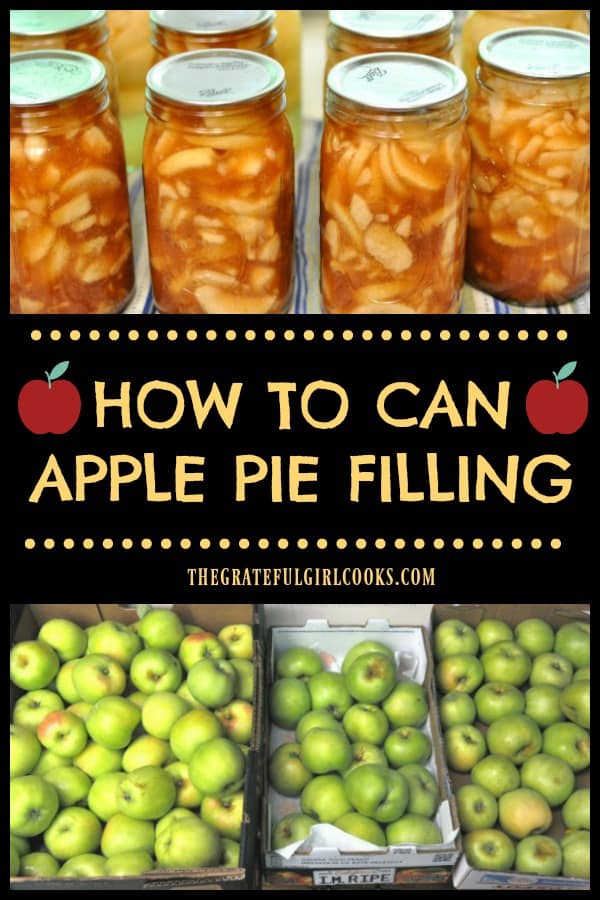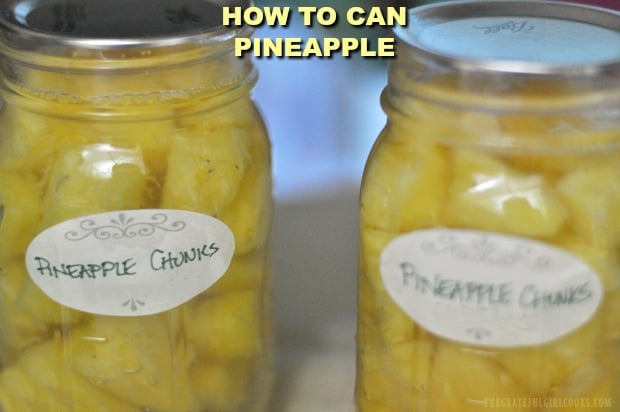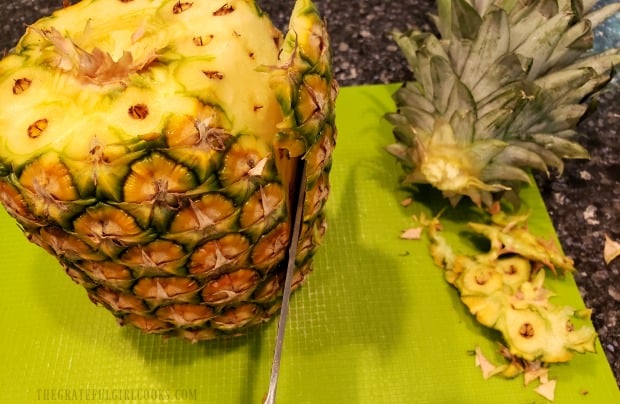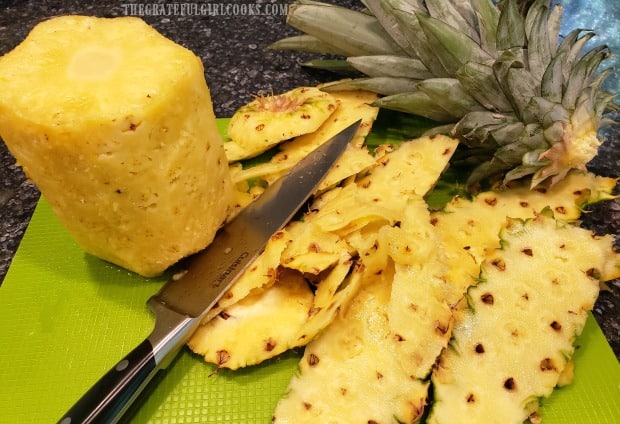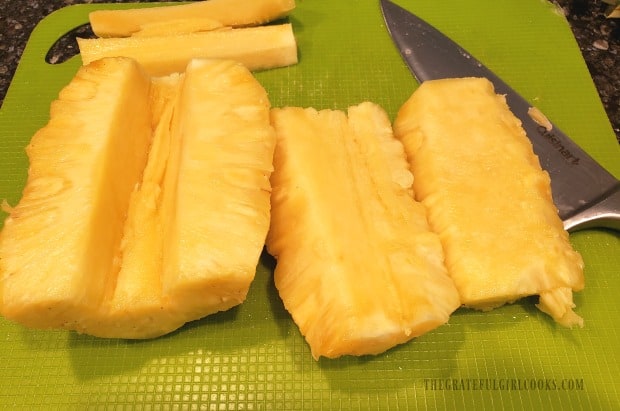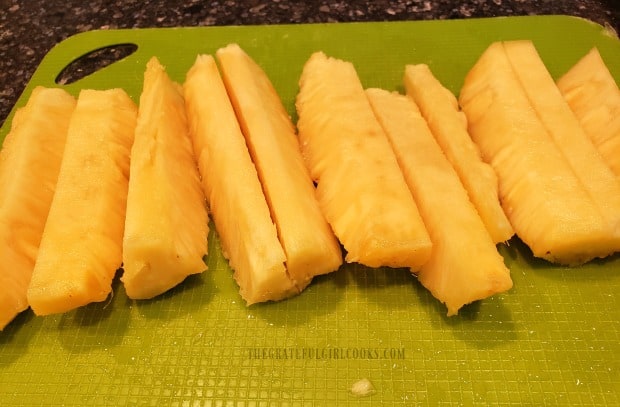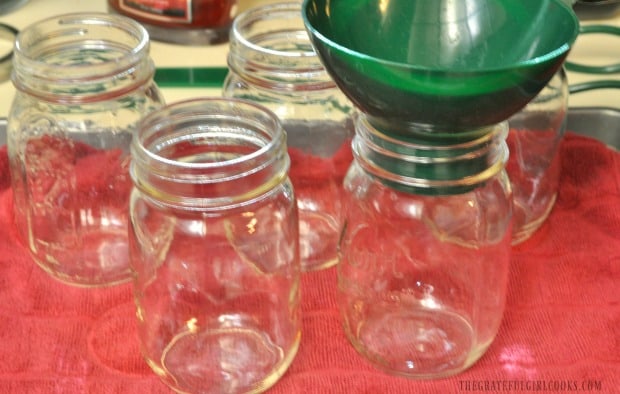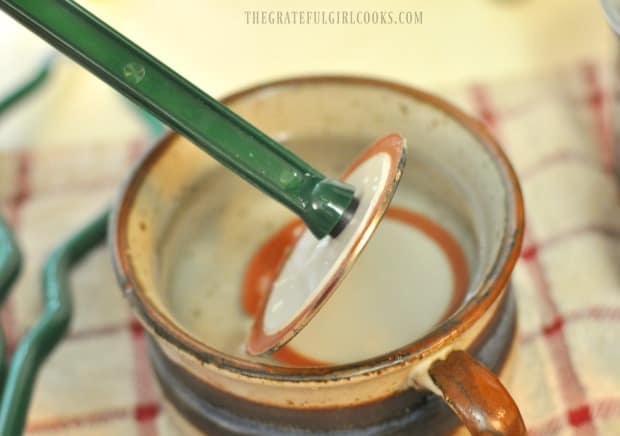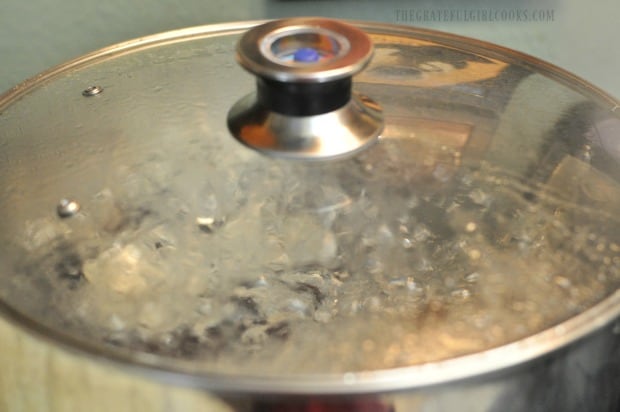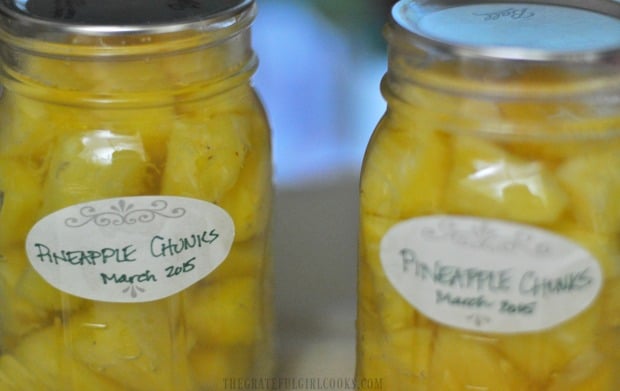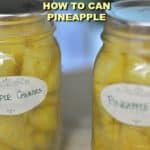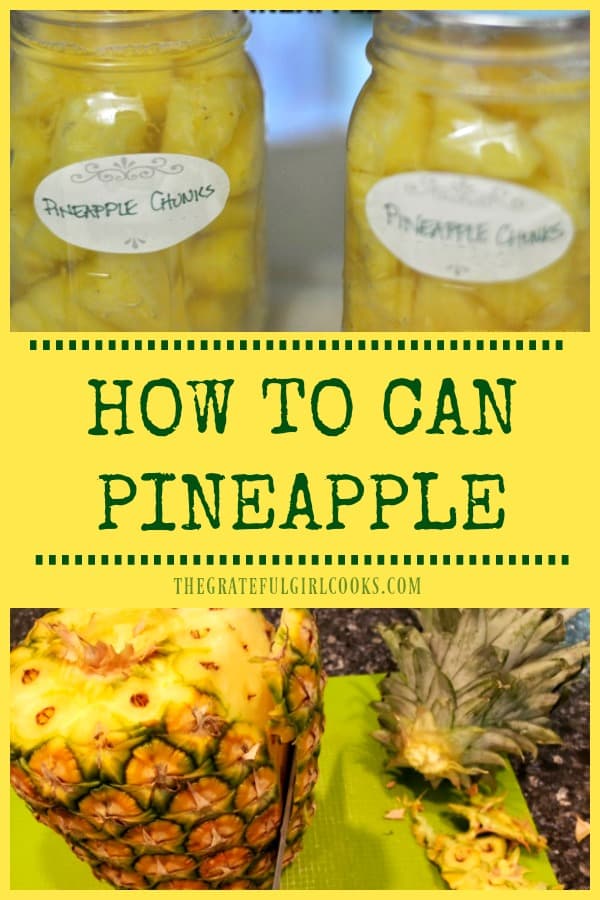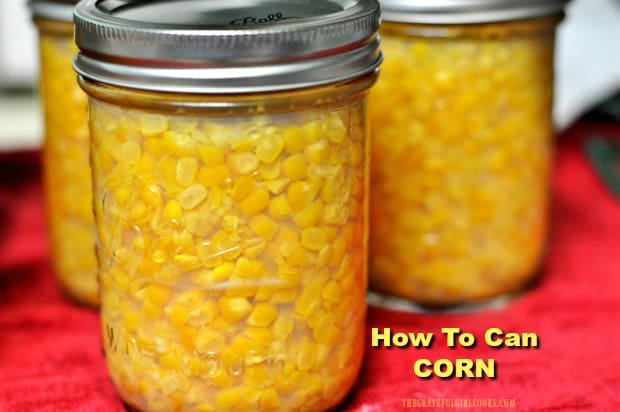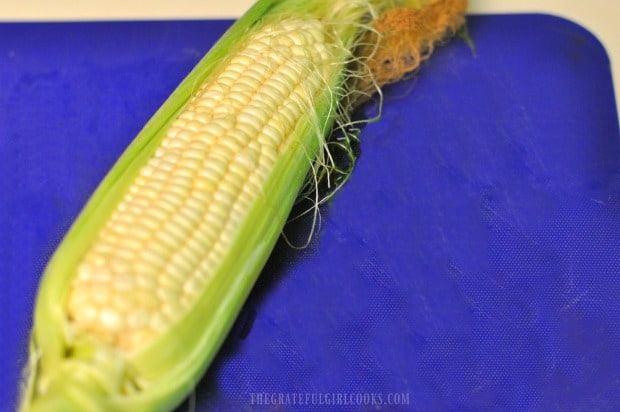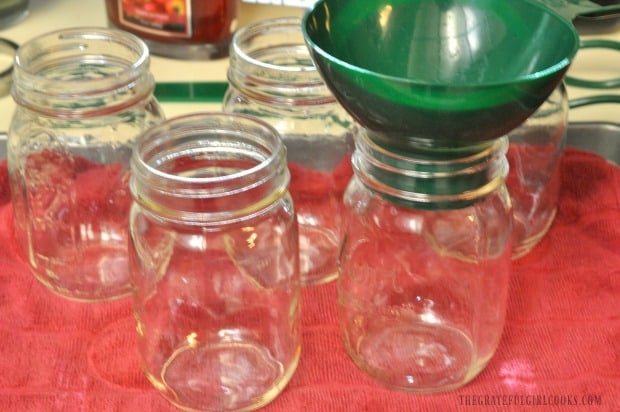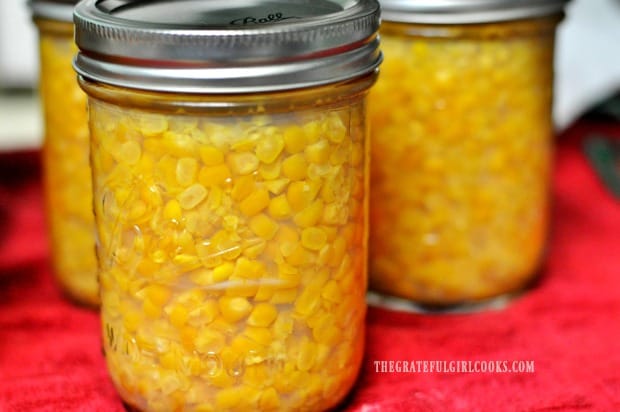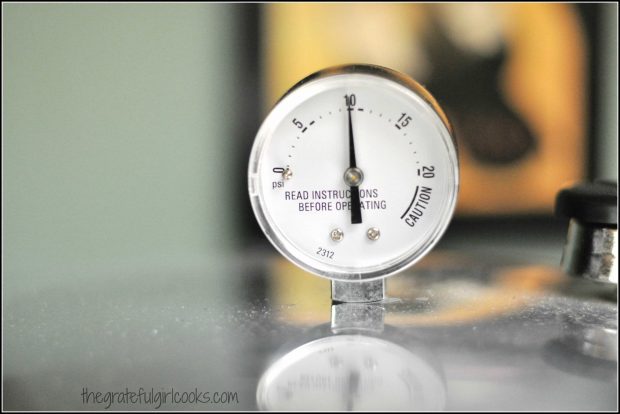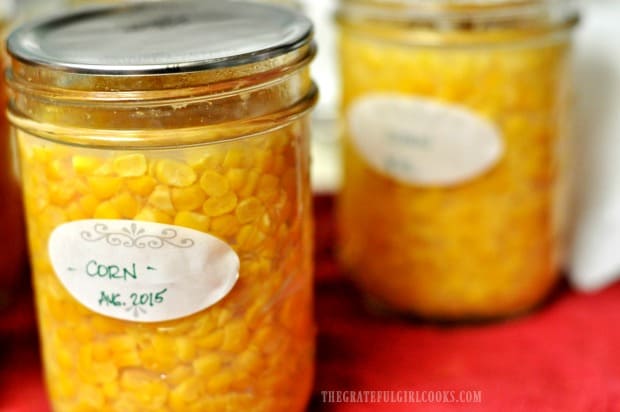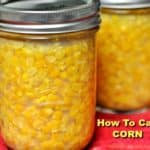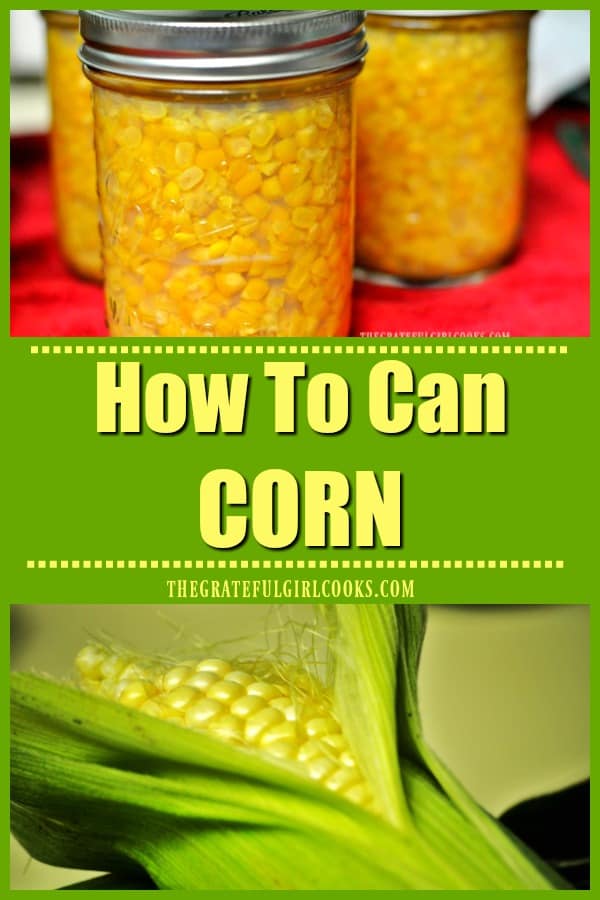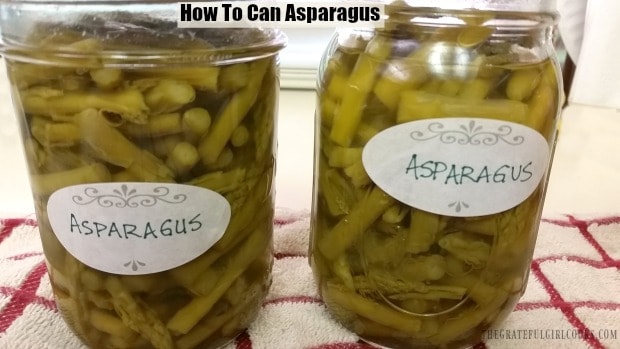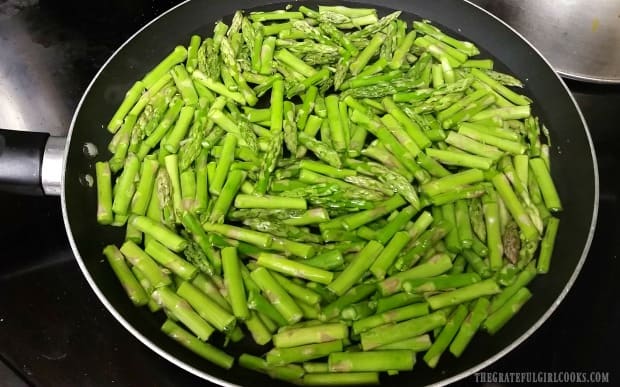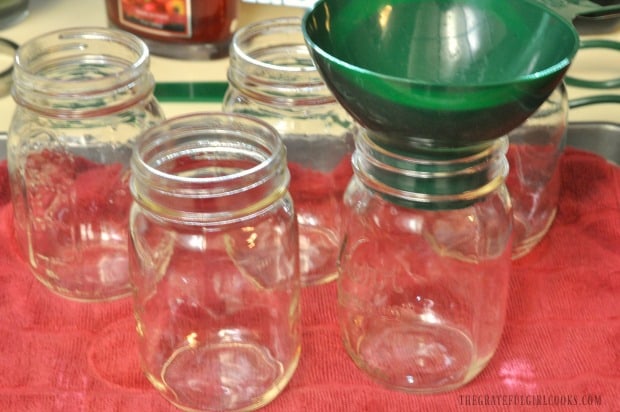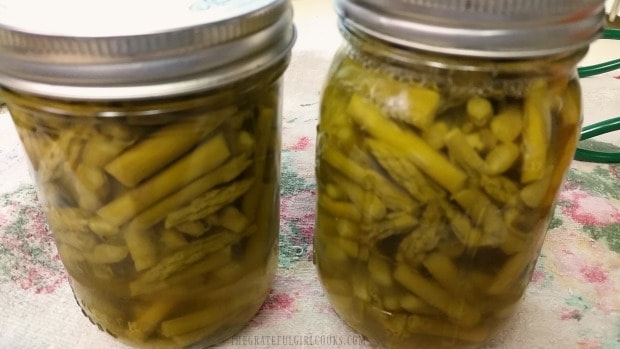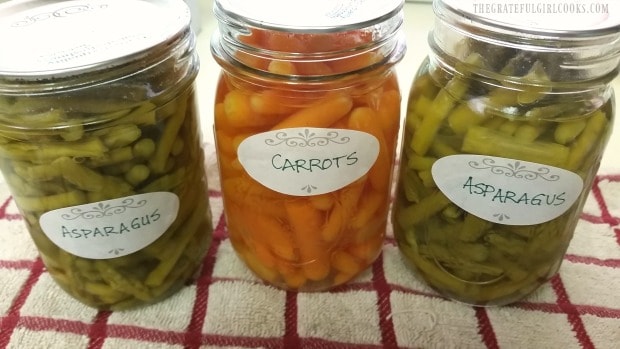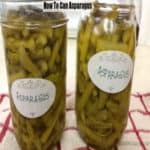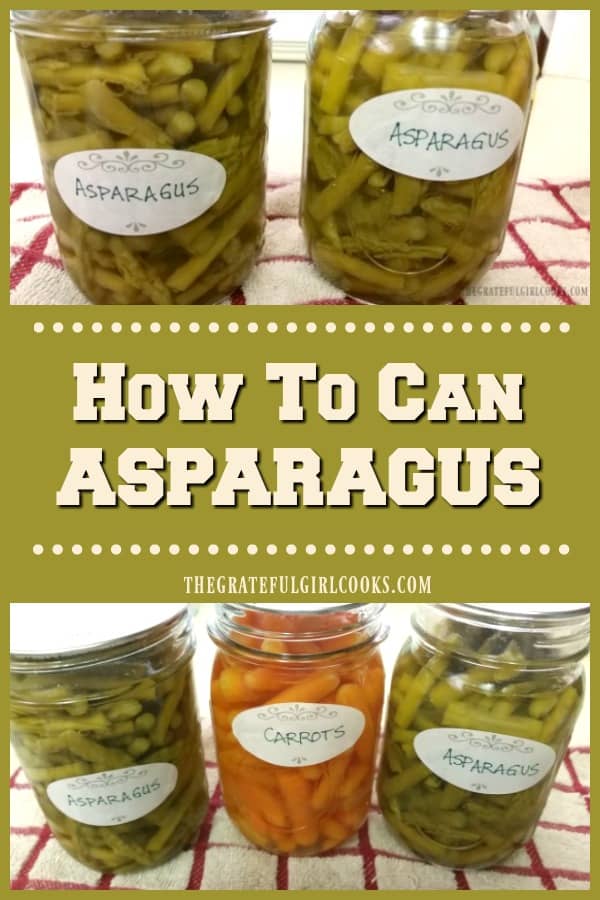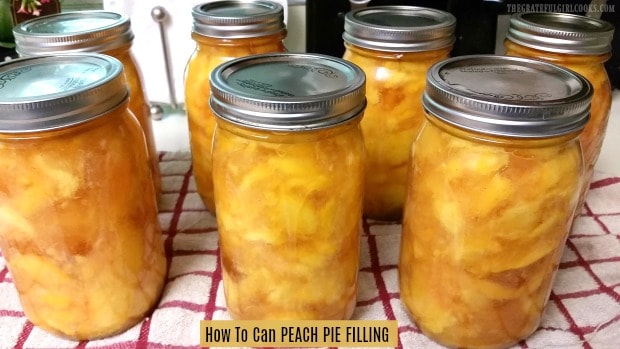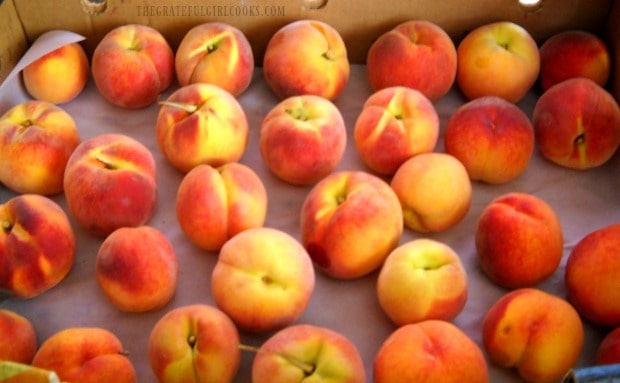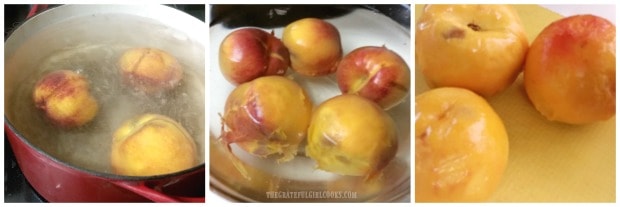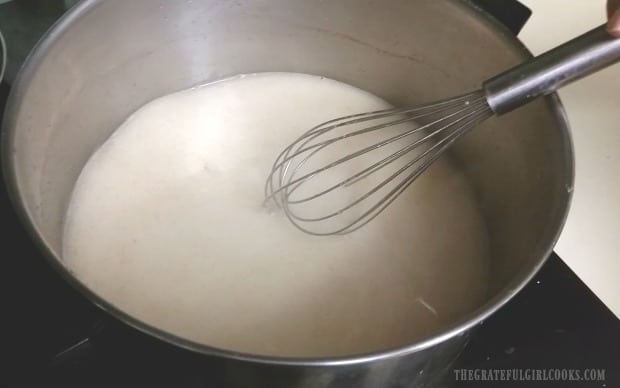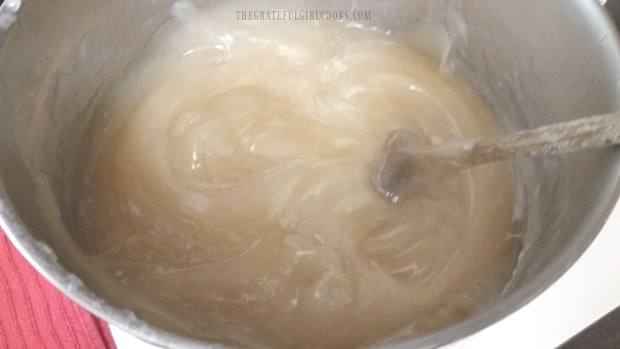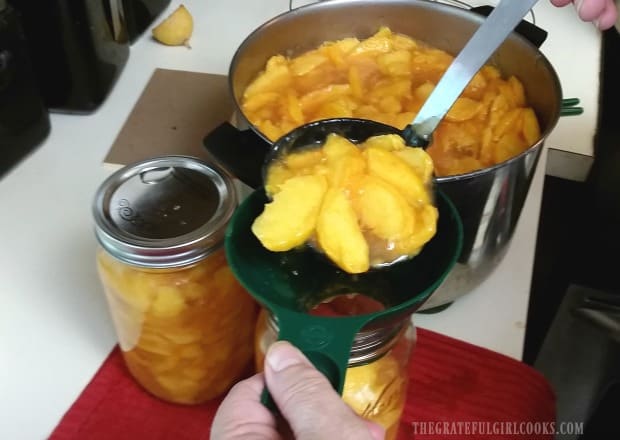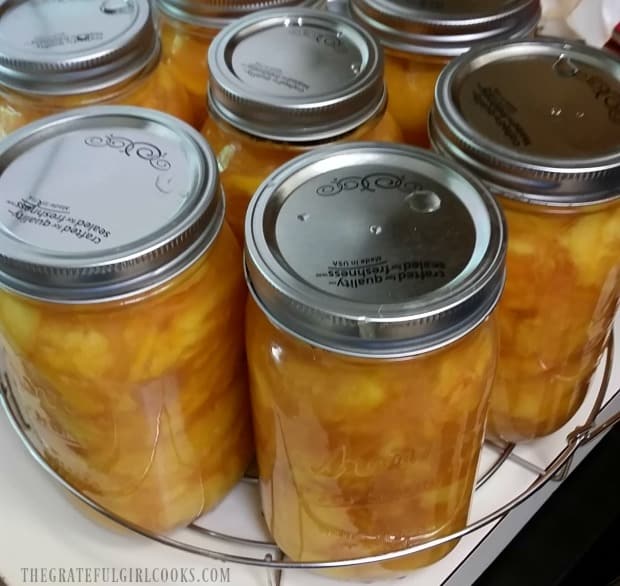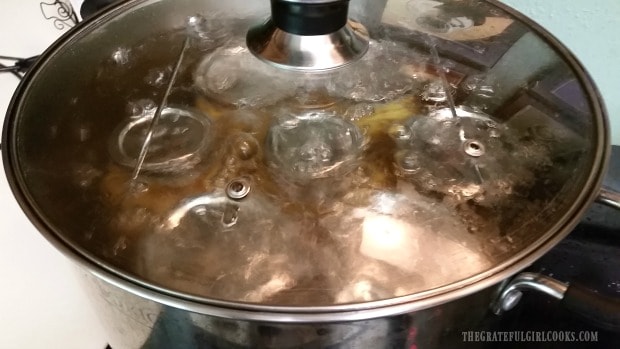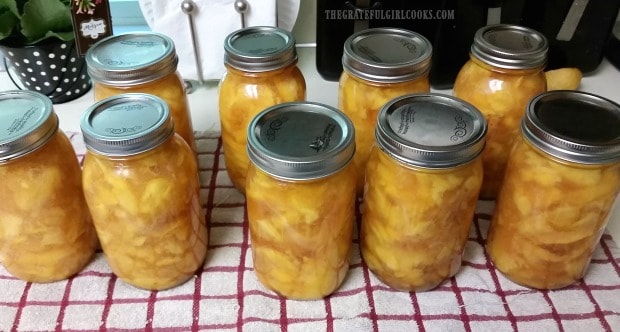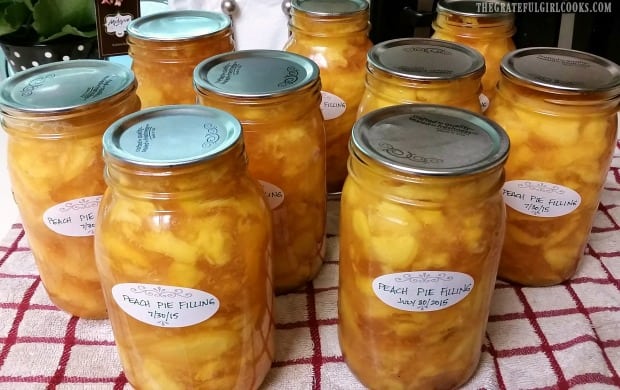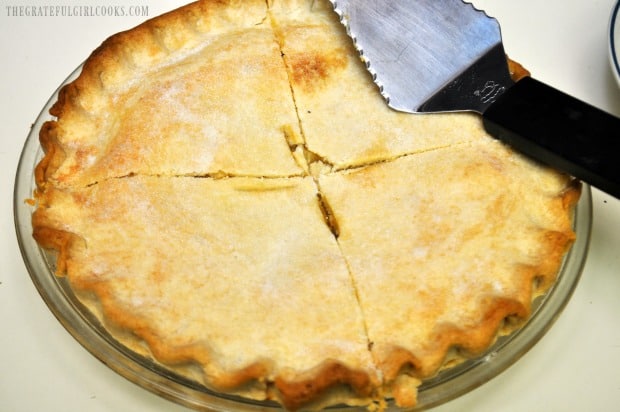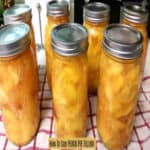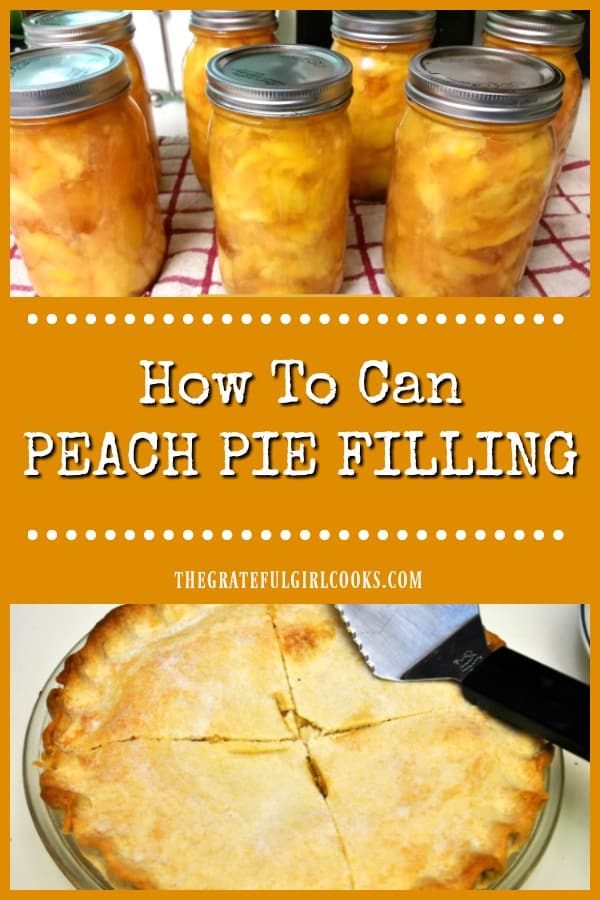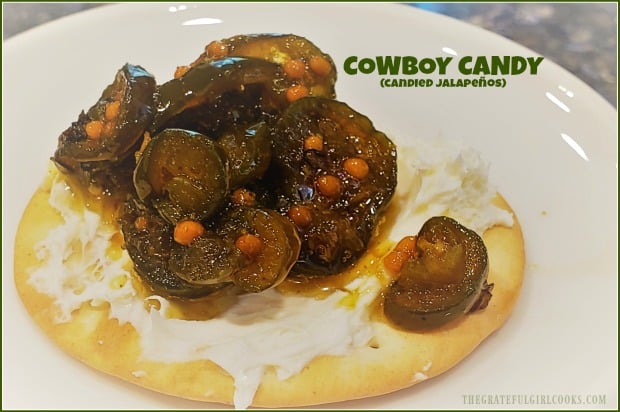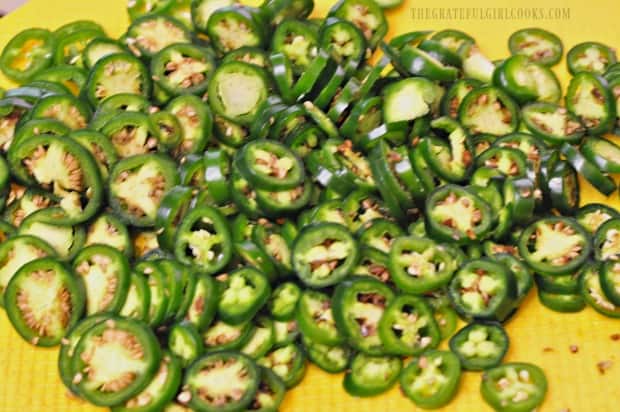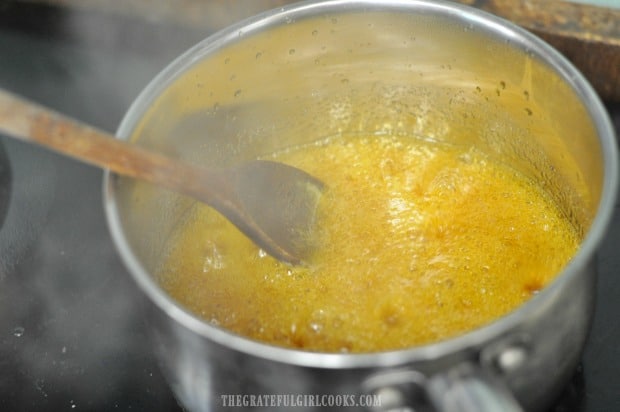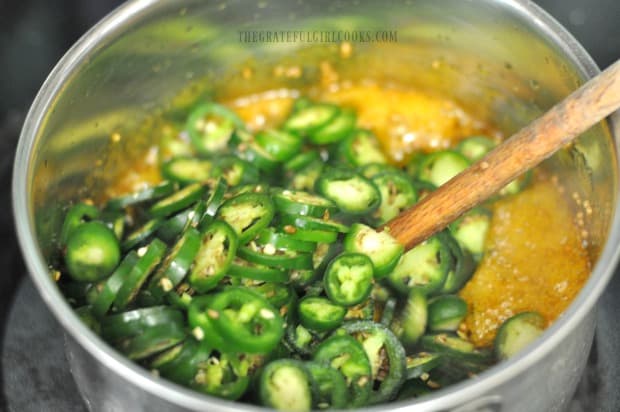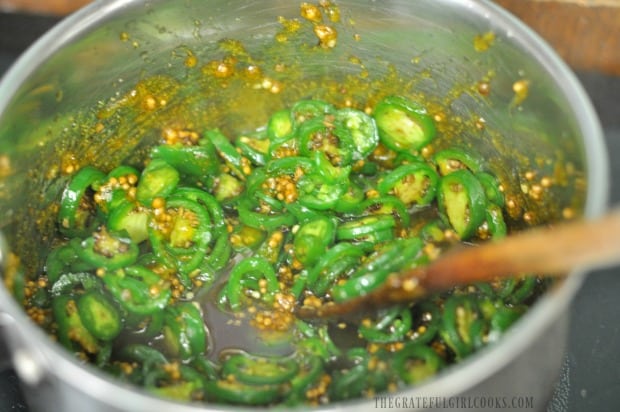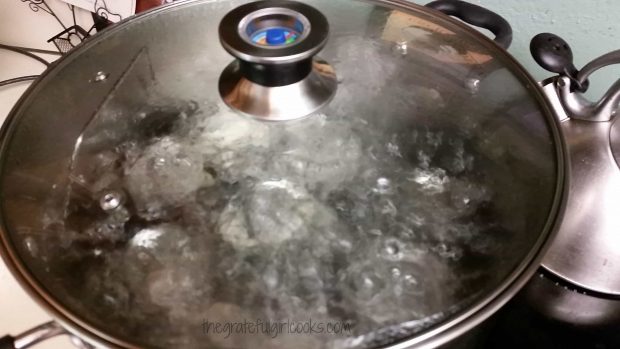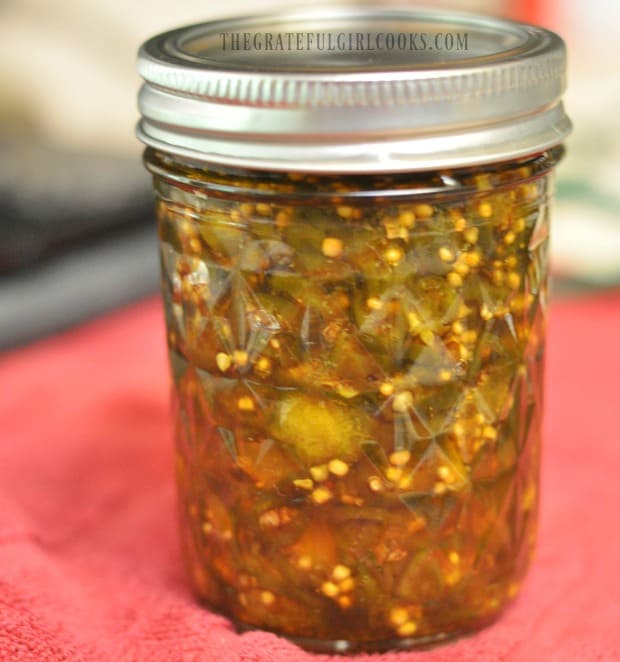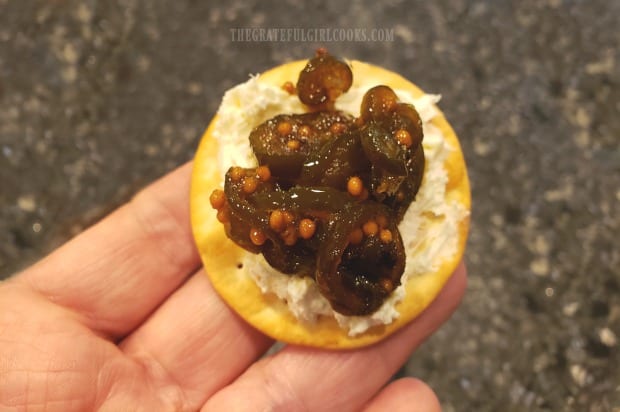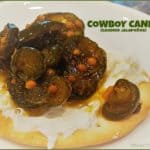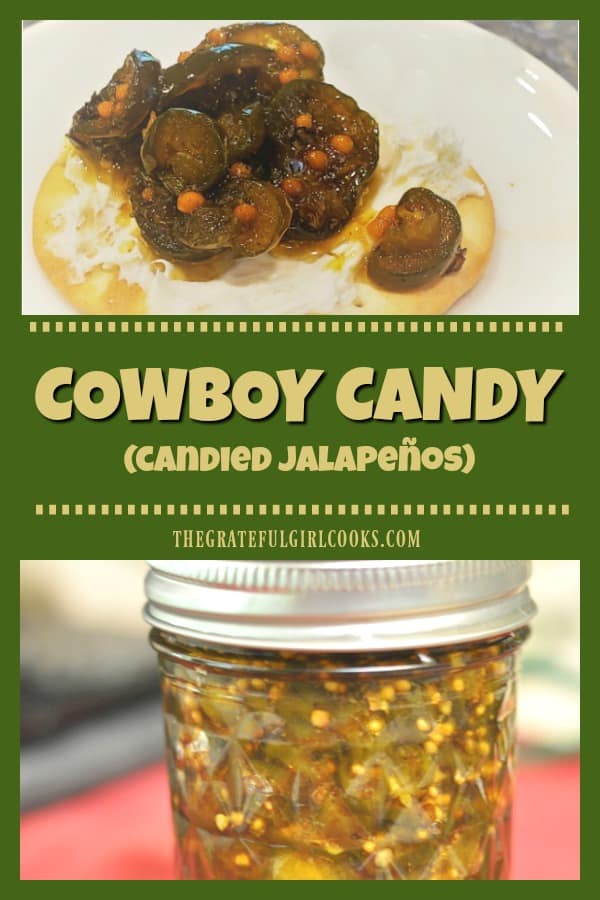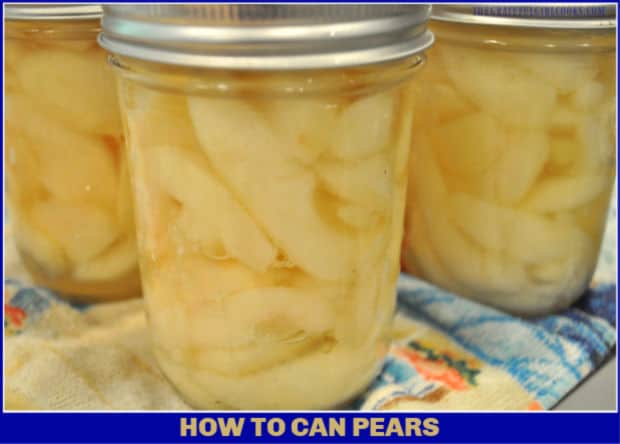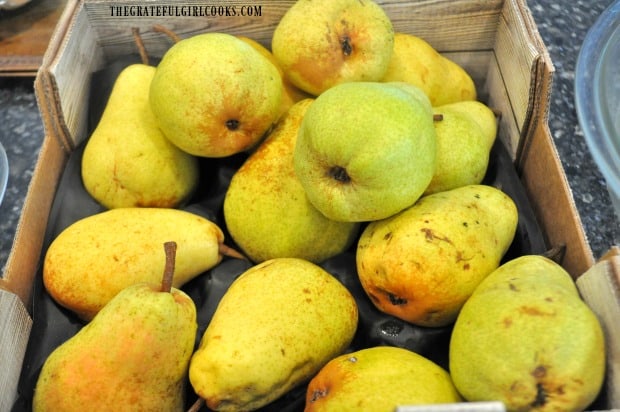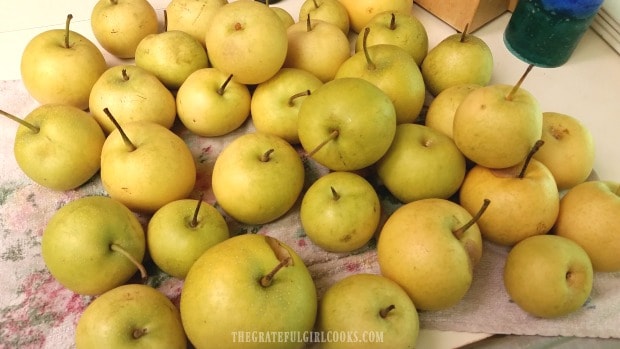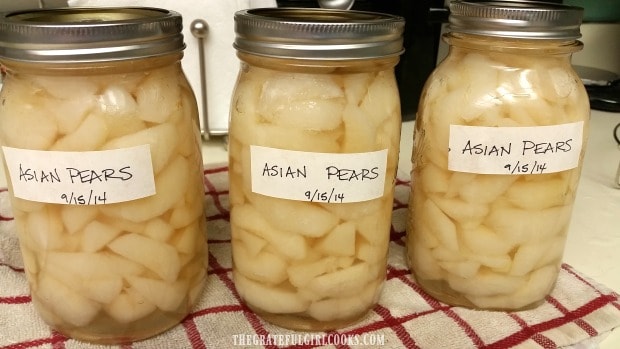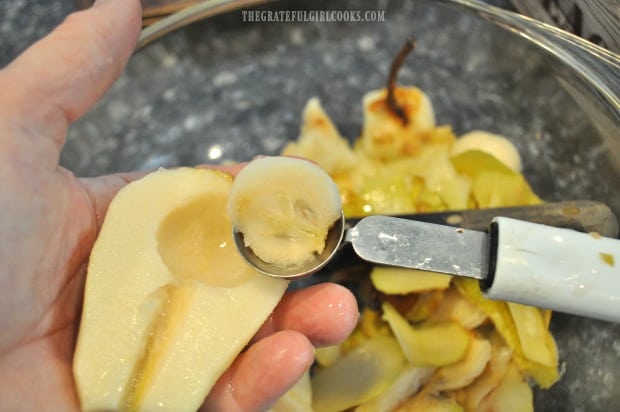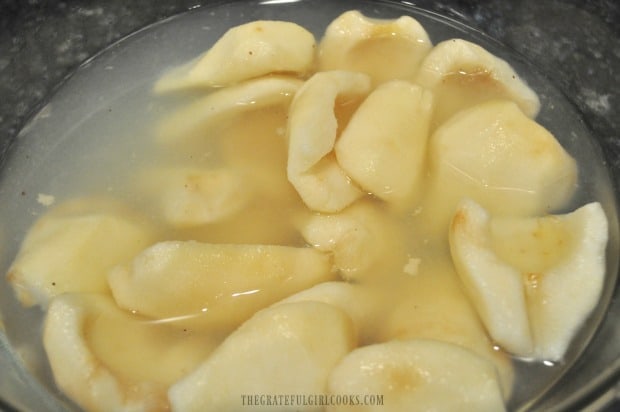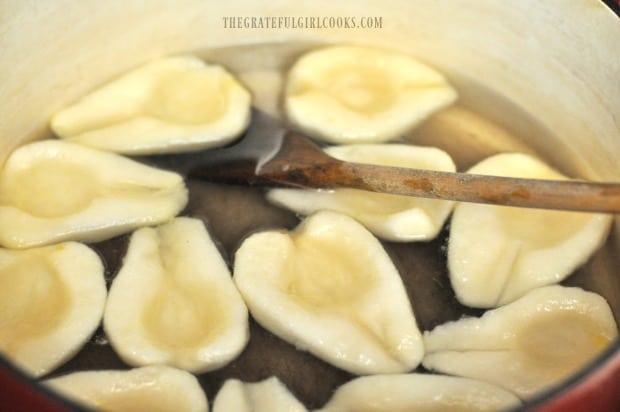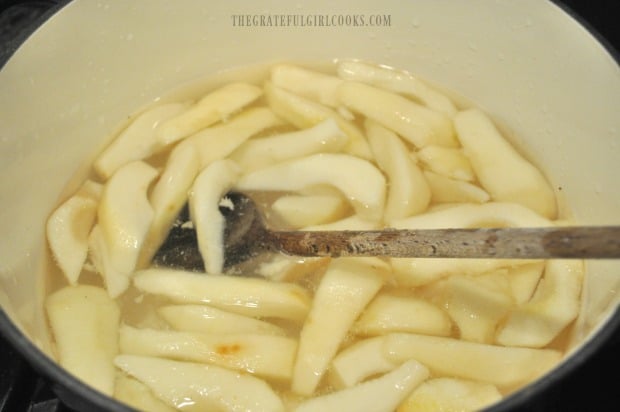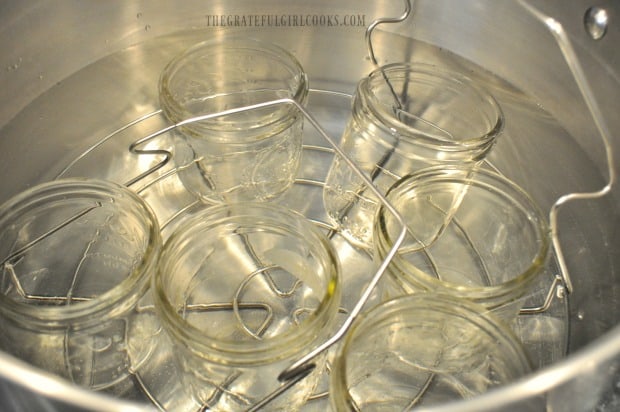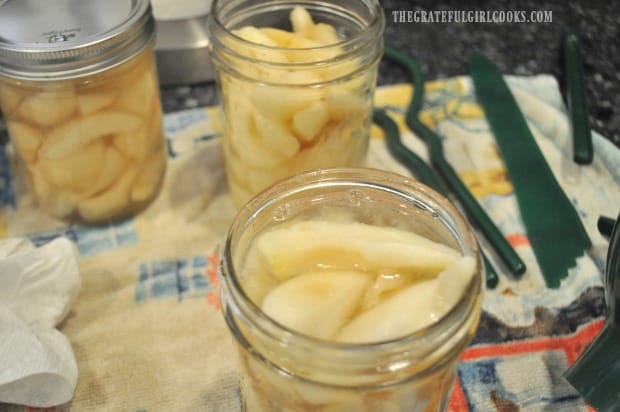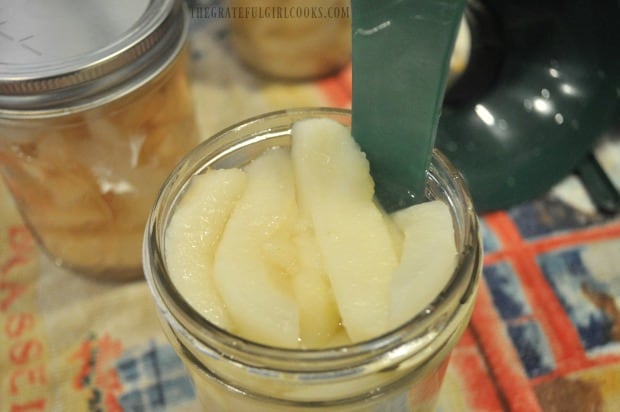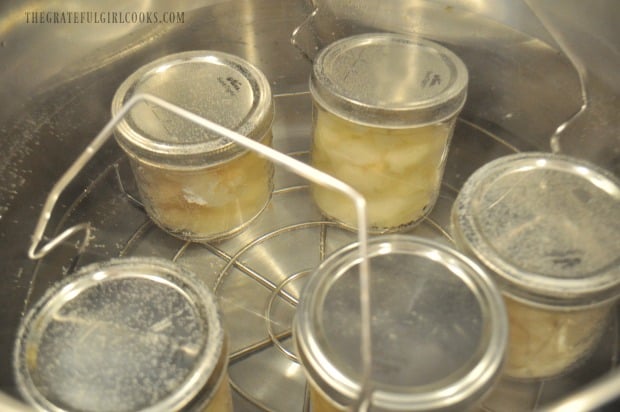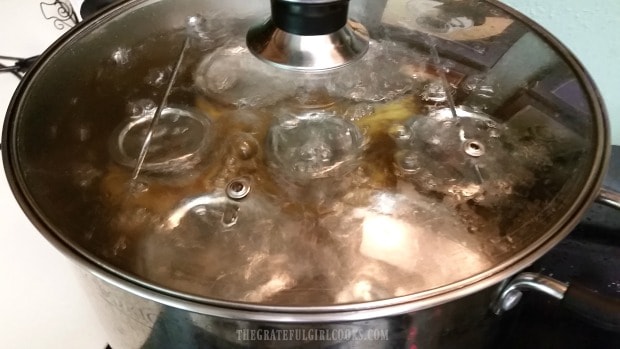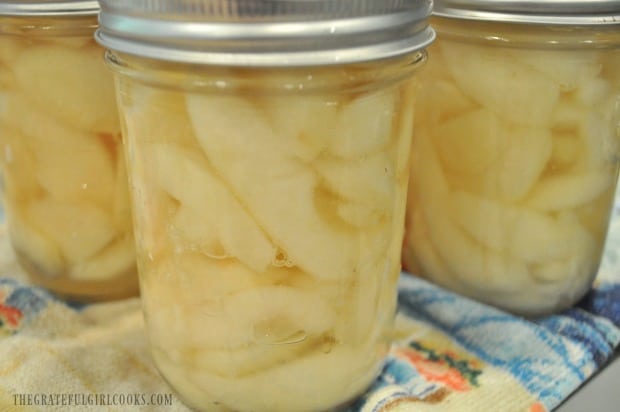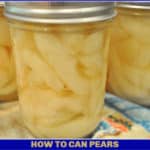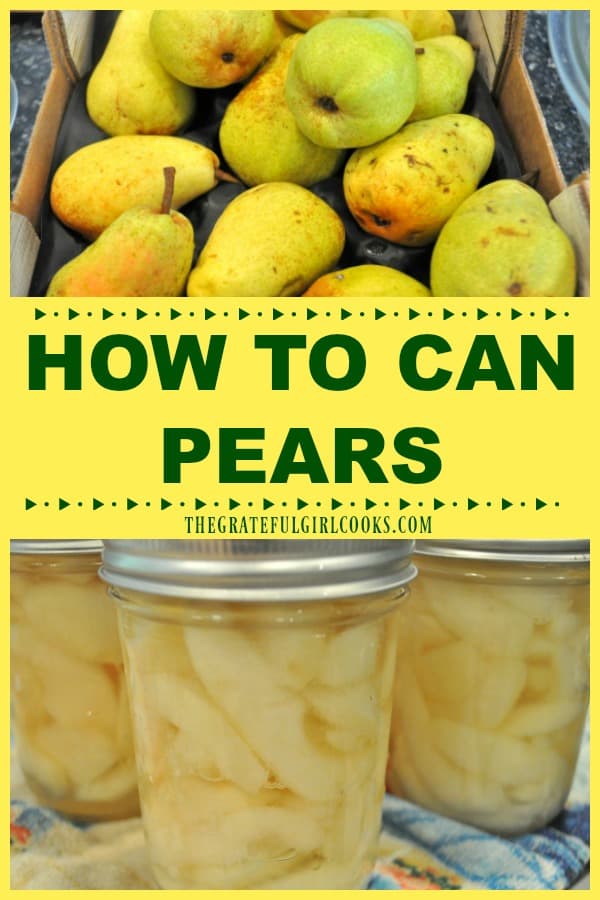Learn how to can delicious Strawberry Rhubarb Jam for long term storage! The recipe will yield approx. 9 jars of yummy, sweet and tangy jam!
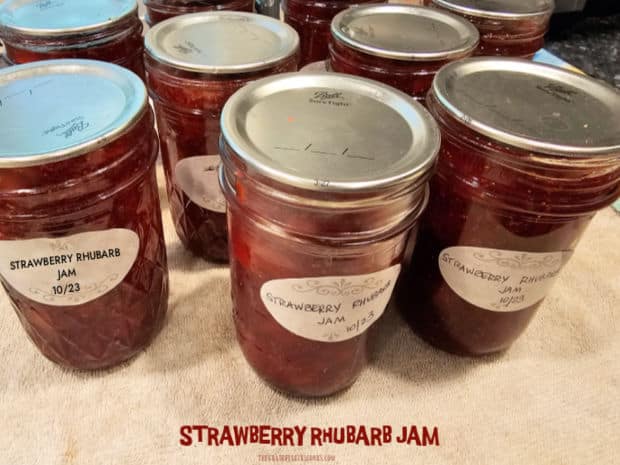
I love to make jars of homemade jam and fill our pantry with them! Many, many years ago I started making homemade strawberry jam and canning it as my first “project” when I learned to can. It was delicious, and I’ve been canning ever since!
Today I want to share a delicious recipe for canning strawberry rhubarb jam. I grow both of these fruits in our little backyard raise bed garden, and absolutely love this sweet, tart combination of flavors!
Scroll Down For A Printable Recipe Card At The Bottom Of The Page
What Do I Need For This Jam Recipe?
For this recipe you need 4 cups of crushed strawberries, 2 cups of sliced rhubarb, lemon juice, granulated sugar and a standard sized box of powdered pectin. **You can also use ½ teaspoon of butter to reduce foam, if desired (optional).**
Place the strawberries in a large bowl (or food processor). Crush them well before measuring, but don’t puree them. I find it convenient to use a potato masher to crush them! The rhubarb should be thinly sliced before measuring, as well.
You also need a water bath canner (or large covered stockpot with a lid and a rack), canning jars, flat lids and screwbands, all prepped according to manufacturer instructions. Prep these items while you get the jam ready for canning.
Prepare The Ingredients For Cooking
Measure the exact amount of finely crushed strawberries (4 cups) and sliced rhubarb (2 cups) into a large stockpot or Dutch oven.
Add ¼ cup fresh or bottled lemon juice and 1 standard sized box of powdered pectin. If desired, you can also add ½ teaspoon of butter to help reduce the foam as the jam cooks, but this is optional. Stir to fully combine these ingredients.
In a separate large bowl, measure out the granulated sugar. You need to have it ready to go as soon as the jam is hot and ready for it! Set this big bowl of sugar aside.
Cook The Strawberry Rhubarb Jam
Bring the fruit mixture to a FULL ROLLING BOIL on HIGH heat. NOTE: A full rolling boil means the fruit doesn’t stop boiling, even while stirring. Stir the fruit constantly while it cooks.
As soon as the fruit comes to a full rolling boil, dump ALL of the sugar in at once, and stir very well, to combine. Bring the jam back to a FULL ROLLING BOIL, stirring constantly, and let it boil for 4 minutes.
When done, remove the pan from the heat source. If there is any foam found on top, simply skim it off and discard.
Canning The Jam
Ladle the hot strawberry rhubarb jam into clean, pre-heated jars. This recipe yields enough jam to fill nine ½ pint jars. Fill each hot jar with the hot jam (using a canning funnel if possible). Leave 1/8″ headspace remaining at the top of each jar.
Remove air bubbles from the jam by inserting a non-metallic utensil down the inside walls of the jar several times. Wipe the rim of the jars very well with a wet paper towel or dishcloth to remove any jam residue that could cause the jar lids to not seal properly.
Cover the jars with prepared flat lids, add the screwband and tighten to fingertip tight.
Processing The Strawberry Rhubarb Jam
Once sealed, place the jars carefully on the canning rack. Lower the rack into the simmering water in the canner. Make sure the water covers the top of the jars by 1-2 inches, adding more hot water, if necessary.
Cover the canner with a lid. Bring the water in the canner to a gentle boil Once the water is gently boiling, set a timer and process the jam for 10 minutes.
When done, turn off the heat, remove the lid from the canner, and let the jars sit undisturbed in the hot water for 5 minutes before removing them.
I’ve Canned The Jam… Now What?
Remove the hot jars carefully, and place them upright on a dish towel on the counter until they’ve cooled completely. Do NOT place the HOT jars directly on the countertop because temperature variances could cause the jars to crack.
Let the jars cool, undisturbed, for 12-24 hours. As the jars seal, you should hear a “ping” sound. Once the jars have completely cooled, make sure to test the seal on the jars before storing them in your pantry.
To test seal: press top/middle section of each lid with your index finger. If the lid springs back, the jar did not seal properly, so you will need to refrigerate the jar of jam. It is still perfectly wonderful for eating, but cannot be stored long term in a pantry.
If the jars sealed properly, wipe them clean, gently remove the screwband for storage, label the jars and place them in your pantry for long term storage.
Time To Enjoy Some Strawberry Rhubarb Jam
When you’re ready to enjoy this delicious strawberry rhubarb jam, pop open a jar! The jam should be a beautiful ruby color, with tiny pieces of strawberries and rhubarb inside. Store leftover, opened jars of jam in the refrigerator.
Enjoy the jam on toast, English muffins, peanut butter and jelly sandwiches, or even use as a topping for pancakes. It’s delicious!
I hope you enjoy this yummy fruit jam as much as we do. Happy canning AND eating, and thanks for visiting my blog.
I invite you to come back again soon for more family-friendly recipes. Take care, may God bless you, and have a GREAT day!
Looking For More JAM Recipes?
You can find ALL of my recipes in the Recipe Index, which is located at the top of the page. I have lots of delicious jams and marmalades to choose from, including:
Want More Recipes? Get My FREE Newsletter!
I publish a newsletter 2 times per month (1st and 15th) with lots of recipes, tips, etc..
Would you like to join our growing list of subscribers?
There is a Newsletter subscription box on the top right (or bottom) of each blog post, depending on the device you use.
You can submit your e-mail address there, to be added to my mailing list.
Find Me On Social Media:
Facebook page: The Grateful Girl Cooks!
Pinterest: The Grateful Girl Cooks!
Instagram: jbatthegratefulgirlcooks
Adapted from: “Ball Blue Book – Guide To Preserving”, page 35, published by Hearthmark, LLC in 2013
↓↓ PRINTABLE RECIPE BELOW ↓↓
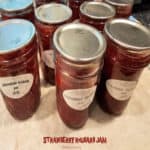
Learn how to can delicious Strawberry Rhubarb Jam for long term storage! The recipe will yield approx. 9 jars of yummy, sweet and tangy jam!
- 4 cups crushed strawberries
- 2 cups sliced rhubarb
- ¼ cup fresh lemon juice
- 1 box powdered pectin
- 8½ cups granulated sugar
- ½ teaspoon butter (optional) to cut down on foaming
Begin heating water in canner, and prep/heat jars, lids and rings per manufacturer instructions, so they're ready when the jam is ready.
Place strawberries in large bowl; crush them well before measuring. Rhubarb should be thinly sliced before measuring, as well.
Measure exact amount of crushed strawberries and sliced rhubarb into a large stockpot or Dutch oven. Add fresh or bottled lemon juice and pectin. If desired, add butter to reduce foam as jam cooks (optional), Stir to combine ingredients.
In a separate large bowl, put the granulated sugar. You need it ready to go as soon as the jam is boiling hot. Set aside.
Bring fruit mixture to a FULL ROLLING BOIL on HIGH heat. NOTE: A full rolling boil means fruit doesn't stop boiling, even while stirring. Stir fruit constantly while it cooks. As soon as fruit comes to full rolling boil, dump ALL sugar in at once. Stir very well, to combine. Bring jam back to a FULL ROLLING BOIL, stirring constantly, and let it boil for 4 minutes. When done, remove pot from the heat. If there's any foam on top, skim it off and discard.
Ladle jam into clean, pre-heated jars. Fill each with jam (using canning funnel if possible). Leave 1/8" headspace remaining at the top of each jar. Remove air bubbles from by inserting a non-metallic utensil down the sides of the jar several times. Wipe jar rims very well with a wet paper towel or dishcloth to remove any jam residue that could cause jar lids to not seal properly. Cover jars with prepared flat lids; add screwband and tighten to fingertip tight.
Once sealed, place jars carefully on canning rack. Lower rack into simmering water in canner. Make sure water covers top of the jars by 1-2 inches, adding more hot water, if necessary. Cover the canner. Bring water to a gentle boil. Once gently boiling, set a timer and process jam for 10 minutes. When done, remove pan from heat, remove cover, and let jars sit for 5 minutes in the hot water.
Remove hot jars; place upright on a dish towel on the counter. DON'T place HOT jars directly on countertop; temperature variances could cause jars to crack. Let cool, undisturbed, 12-24 hours. As jars seal, you should hear a "ping" sound. Once jars have cooled, test the seal before storing jars in pantry. To test seal: press center of each lid with an index finger. If lid springs back, jar did not seal properly, so you must refrigerate that jar of jam. It's fine for eating, but cannot be stored long term in pantry. If jars sealed properly, wipe clean, remove the screwband for storage; label jars. Place jars in pantry for long term storage.
